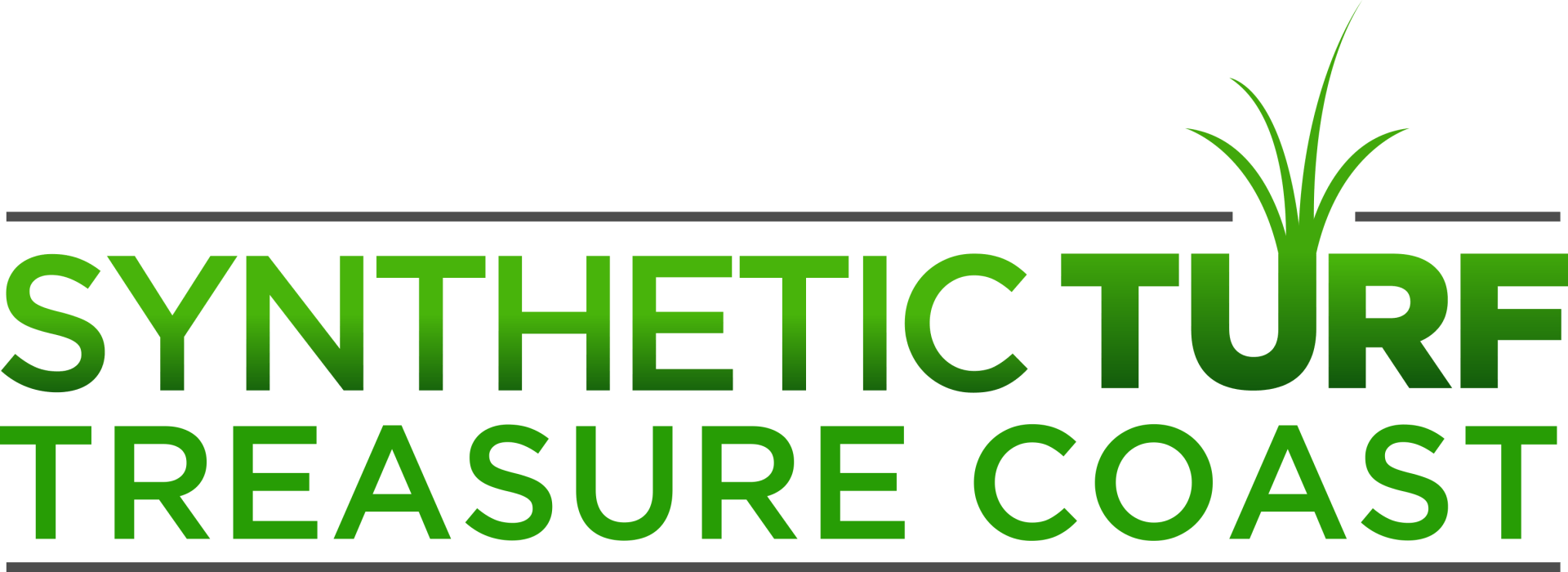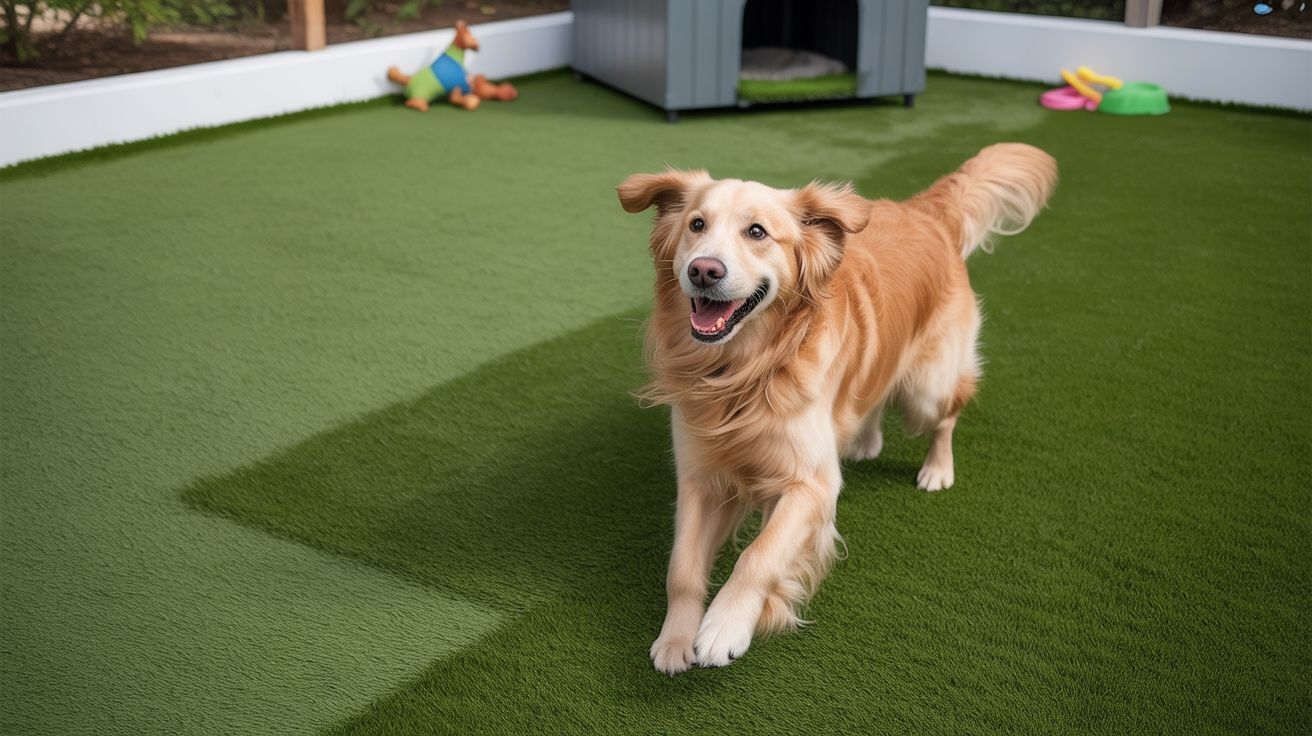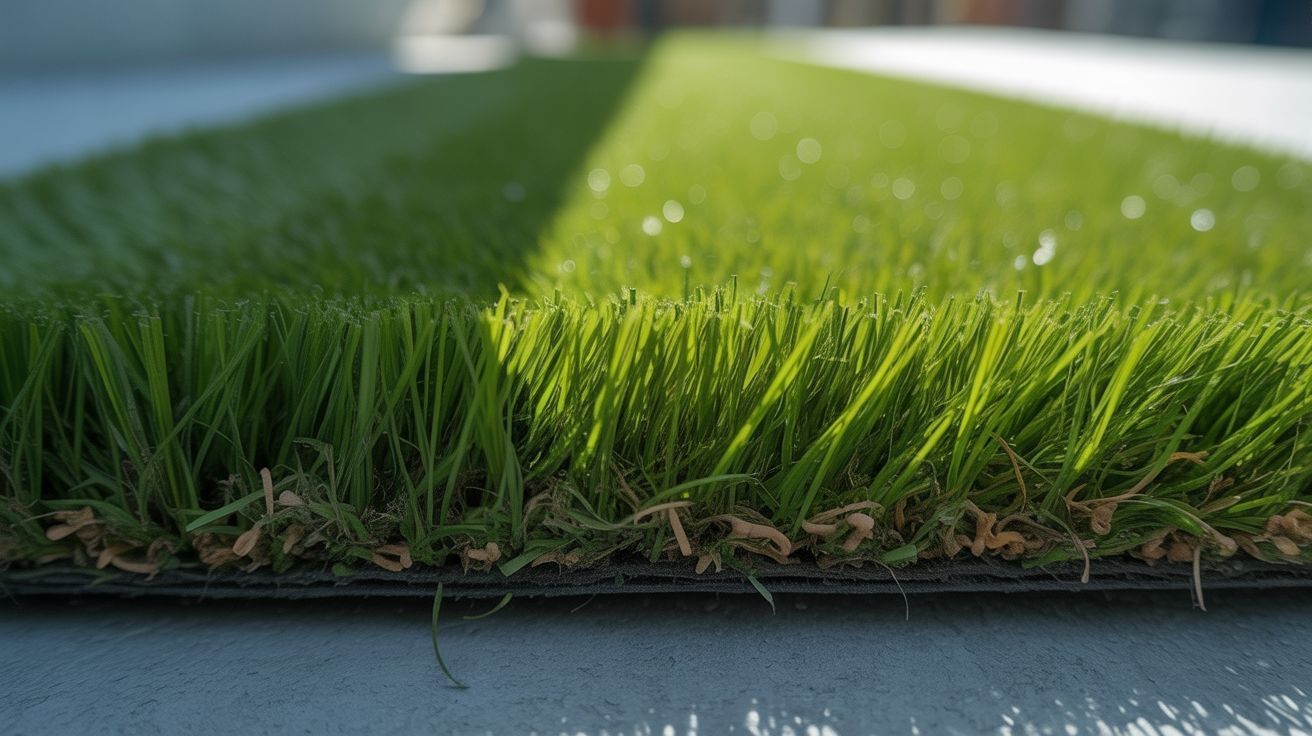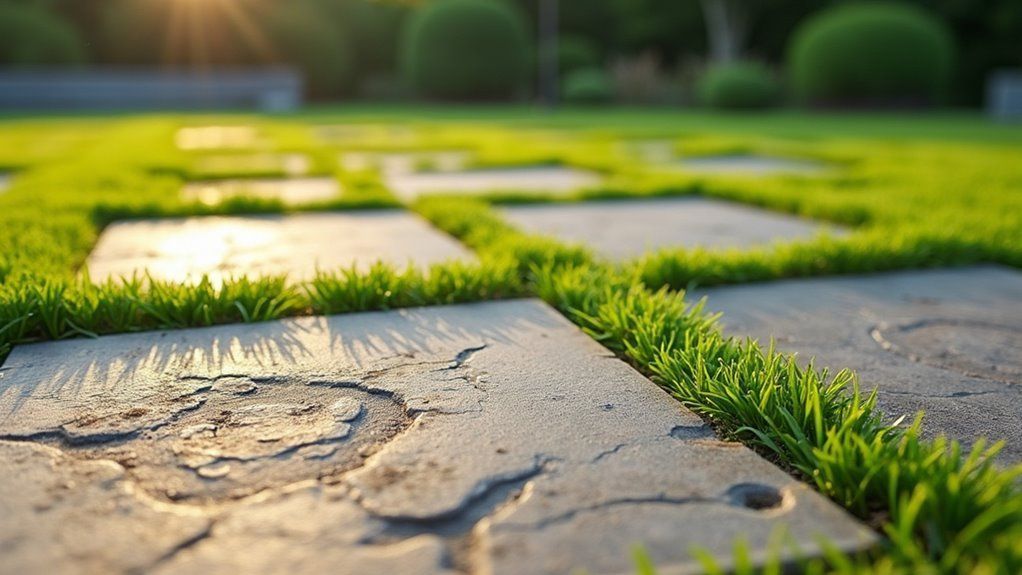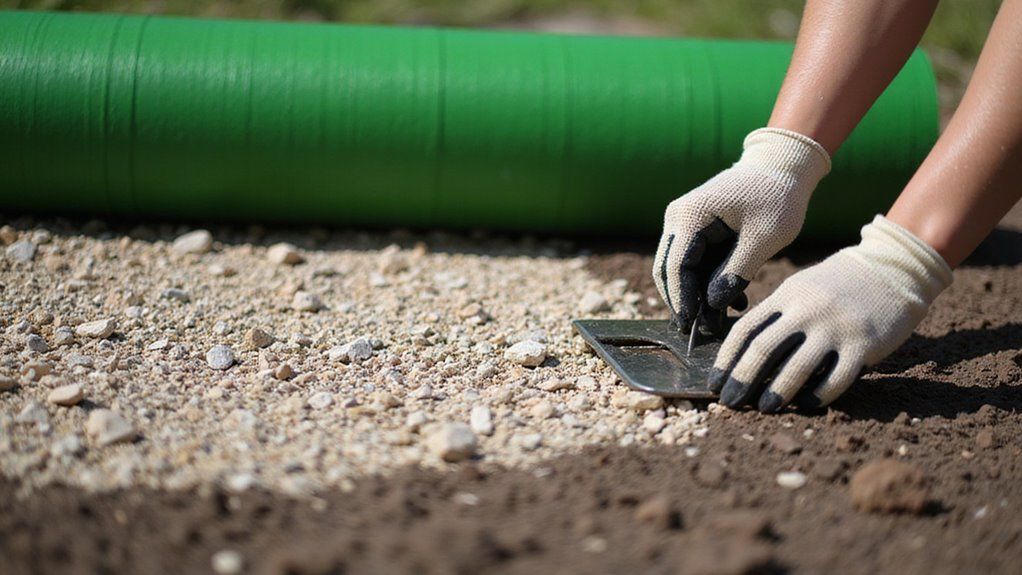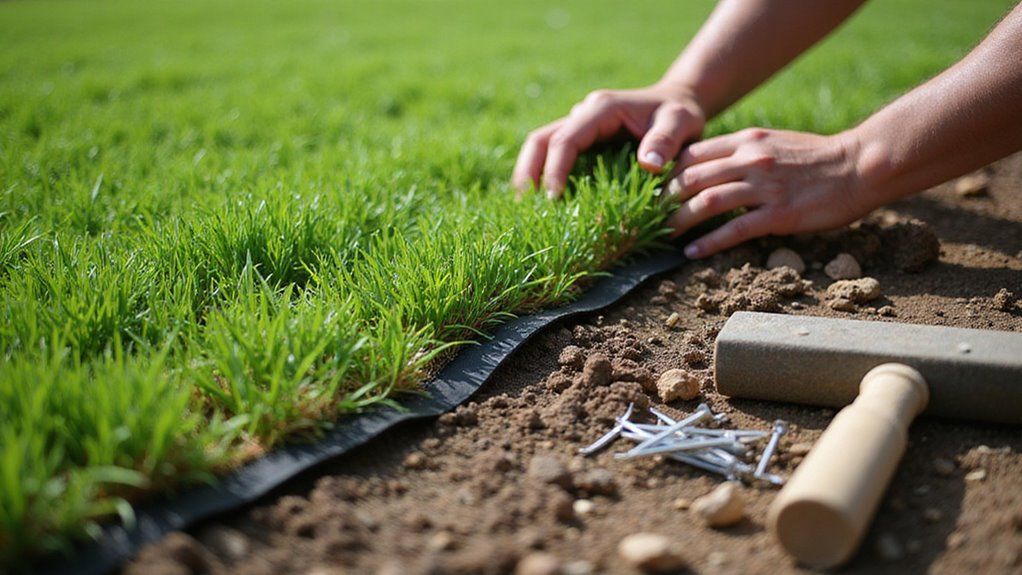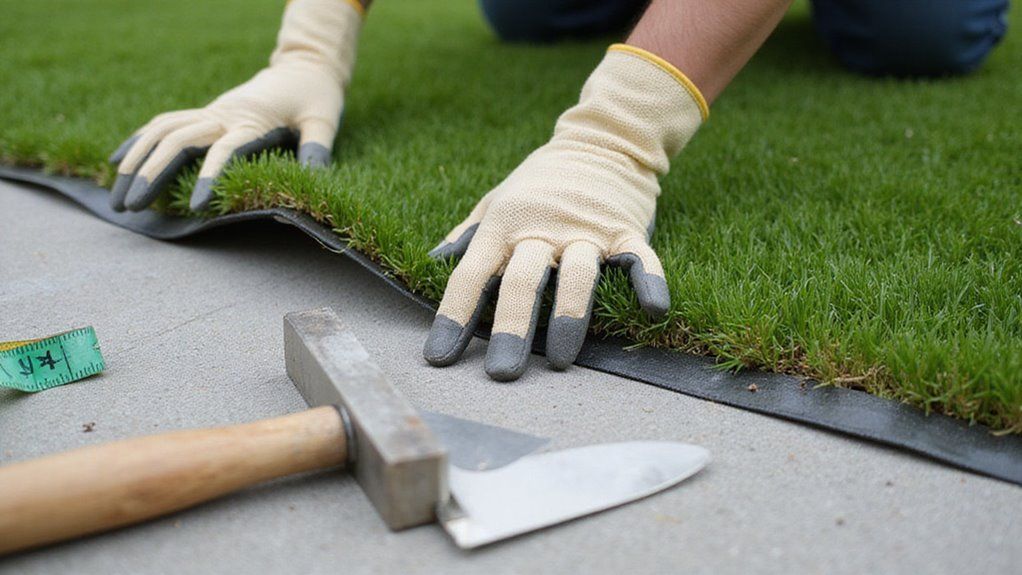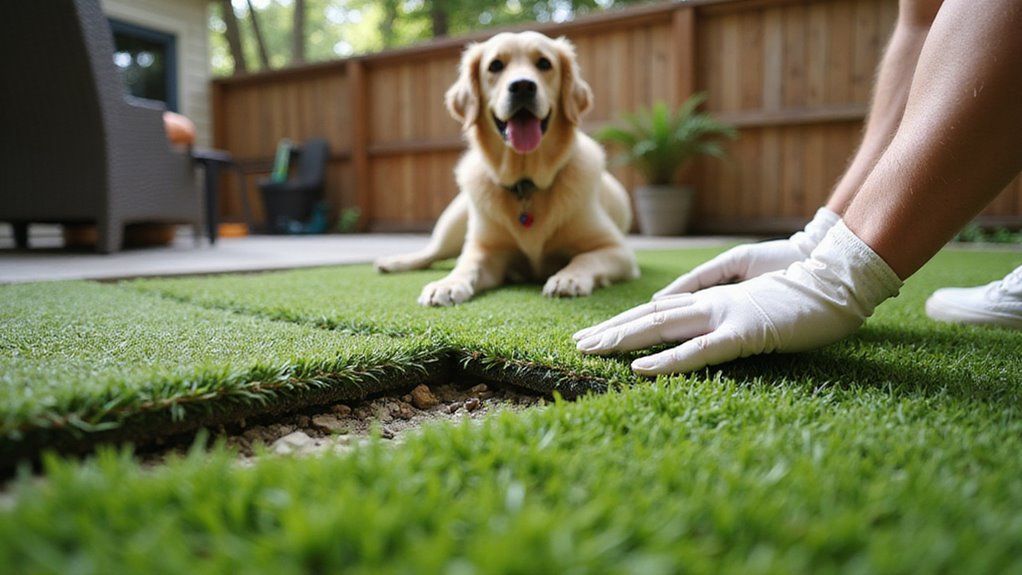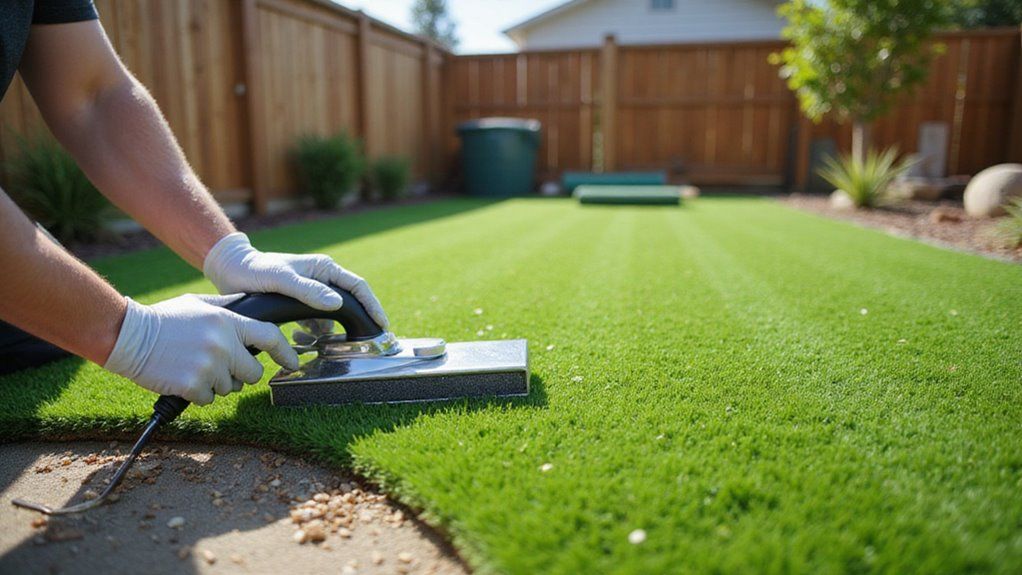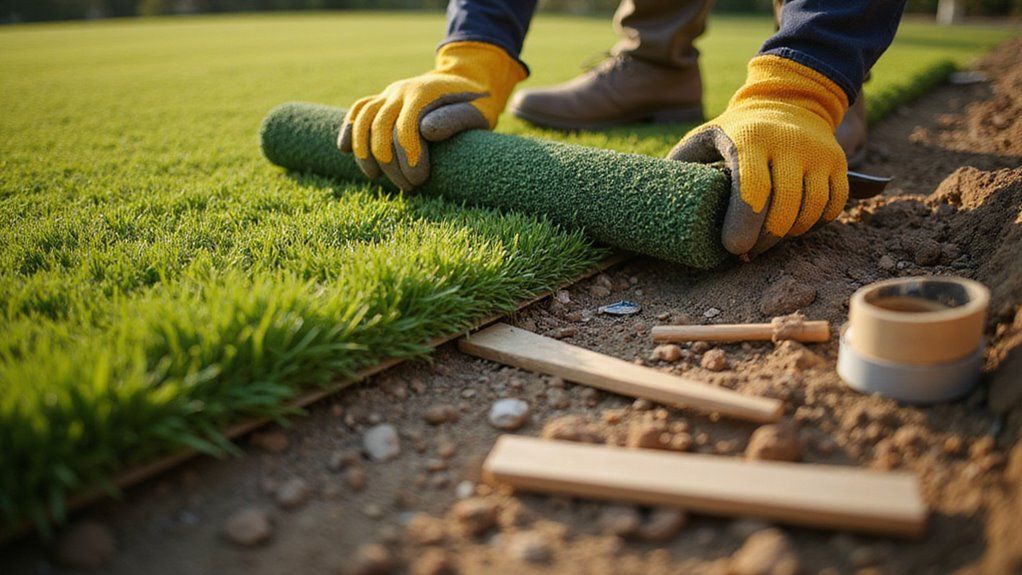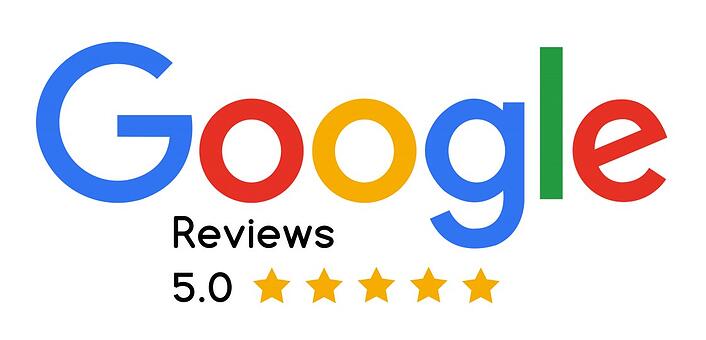How Much Does It Cost to Install Artificial Grass
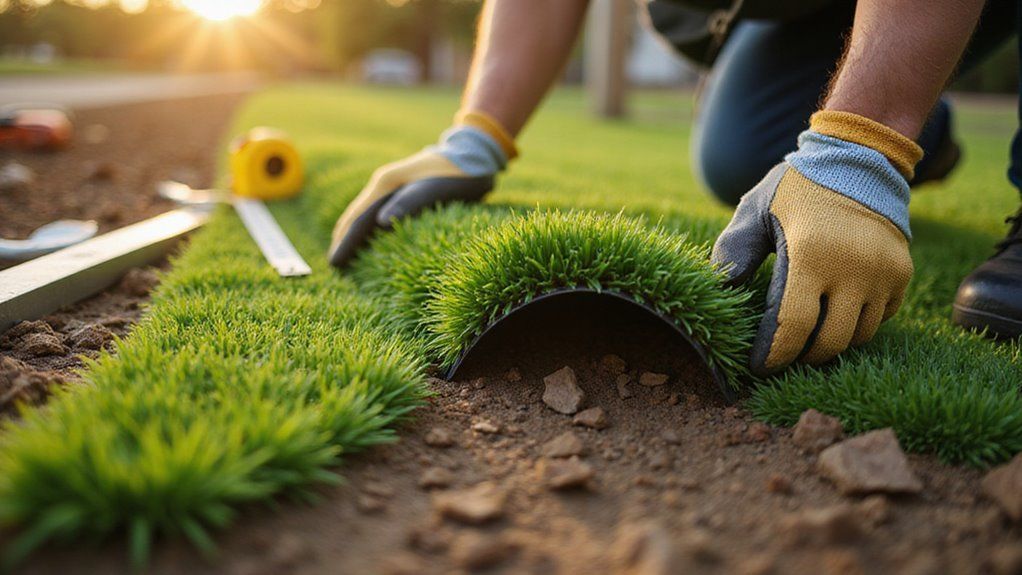
Gone are the days of spending countless hours mowing, watering, and maintaining natural grass lawns. Rising water costs and maintenance demands make traditional grass yards increasingly burdensome for Florida homeowners. Artificial grass offers a practical solution that eliminates ongoing maintenance while providing a lush, green yard year-round.
Installing artificial grass in Florida costs between $12-$22 per square foot, with total project expenses from $2,400 to $40,000. Labor makes up 50-60% of costs, while materials like polyethylene ($5-8/sq ft), polypropylene ($3-5/sq ft), or nylon ($8-12/sq ft) comprise 40-50%.
This guide explores every aspect of artificial grass installation costs, from materials to labor requirements.
Key Takeaways
- Installation costs range from $12 to $20 per square foot in Florida, with total projects costing $2,400 to $40,000.
- Labor comprises 50–70% of total costs, while materials account for 30–50% of the installation expense.
- Material type significantly impacts pricing: nylon costs $8-12, polyethylene $5-8, and polypropylene $3-5 per square foot.
- Site preparation, drainage systems, and existing lawn removal add $1-3 per square foot to installation costs.
- Homeowners typically recover their investment within 4-7 years through water and lawn maintenance savings.
What Does Artificial Grass Installation Cost?
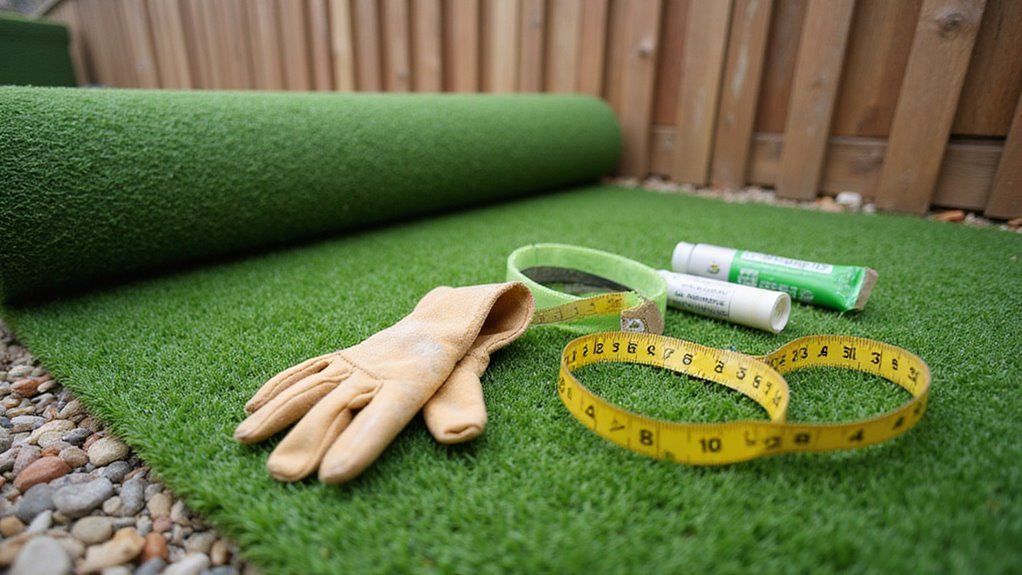
You’ll pay between $12 and $20 per square foot for artificial grass installation in Florida, with total project costs ranging from $2,400 for a 200-square-foot area to $40,000 for 2,000 square feet. Labor typically accounts for 50–60% of your total expenditure, while materials comprise the remaining 40–50%.
Your final price point depends on turf material selection—polyethylene costs less than premium nylon—and whether your project exceeds 500 square feet, which may trigger permit requirements.
Average Cost Range for Installation
Professional artificial grass installation costs range from $12 to $20 per square foot in Florida. Labor makes up 50 to 60 percent of total costs, while materials account for 40 to 50 percent. A 200-square-foot yard installation costs between $2,400 and $4,000. Larger areas of 2,000 square feet range from $24,000 to $40,000.
Material quality affects the final price significantly. Polyethylene works well for homes, while premium nylon costs more. Additional expenses include site preparation, drainage systems, and local permits.
To get an exact quote, schedule a professional evaluation of your property.
Price Per Square Foot Breakdown
A complete artificial grass installation costs $12 to $20 per square foot in Florida. Materials make up the first portion of artificial grass expenses. Basic materials range from $5 to $8 per square foot. Professional installation adds $7 to $12 per square foot to the total.
Project size affects overall pricing considerably. Small areas under 500 square feet cost more per square foot due to minimum service fees. Larger installations offer better value through bulk pricing. Moreover, premium materials like nylon increase costs, while polyethylene provides affordable options.
Labor vs. Material Costs
Labor costs typically account for 60-70% of artificial grass installation, while materials make up 30-40%. The average labor rate ranges from $3-8 per square foot for professional installation.
A skilled crew handles site preparation, turf laying, and finishing work. These tasks require specialized equipment and expertise for proper installation.
Material expenses include turf rolls, infill, adhesives, and drainage components. Premium turf materials cost $2-4 per square foot, depending on quality and specifications. Best results come from balancing quality materials with expert installation.
What Factors Affect Artificial Grass Pricing?
Your artificial grass installation cost varies significantly based on several interrelated factors that directly impact both materials and labor expenses.
The type of turf you select—polyethylene, polypropylene, or nylon—determines your base material cost, while site-specific conditions like soil quality, existing vegetation removal, and grading requirements add to preparation expenses.
You’ll also need to account for drainage infrastructure, property square footage, accessibility constraints, and any custom features like pet-friendly infill or playground safety surfacing.
Quality and Type of Artificial Grass
Different types of artificial grass serve unique needs and quality levels. Polyethylene turf offers a soft feel and medium cost, perfect for home landscapes. Nylon provides maximum durability with superior heat resistance but costs more. Polypropylene stands as the cheapest option with basic durability.
The quality depends on key features. A higher blade density between 60 to 100 ounces creates a more realistic look. Various infill materials like silica sand, rubber, or antimicrobial options enhance performance.
Moreover, each material brings specific benefits to match your requirements and budget. The right choice balances appearance, longevity, and cost-effectiveness.
Site Preparation Requirements
A properly prepared site ensures successful artificial grass installation. The ground must be level, compacted, and have adequate drainage before laying turf. Your installer will remove existing vegetation and debris first.
Base preparation costs range from $3 to $12 per square foot depending on current ground conditions. Additional drainage solutions like French drains may increase total project costs. Poor soil conditions or uneven terrain require extra work to achieve ideal results.
Sites with sandy soil need less preparation than rocky ground. Professional evaluation helps prevent future drainage problems. The right preparation creates a stable foundation for long-lasting artificial grass performance.
Drainage System Needs
A drainage system costs between $3-$8 per square foot for artificial grass installations in Florida. Basic drainage setup for a 200-square-foot area ranges from $600 to $1,600.
The system’s price varies based on soil type and local conditions. Clay soil needs French drains or gravel layers for proper water flow. Slopes require precise grading to prevent water pooling.
Moreover, local stormwater rules affect drainage requirements. Installation must follow specific material standards and ordinance guidelines for water management. A good drainage system protects against mold and extends turf life in Florida’s rainy climate.
Property Size and Accessibility
Property size and access conditions strongly affect artificial grass installation costs.
Difficult access points like narrow yards or second floors increase base costs by 15 to 30 percent. Limited space requires special equipment and extra labor hours. Large properties over 2,000 square feet receive discounts of $2 to $4 per square foot.
As a practical matter, small areas under 200 square feet cost more due to minimum setup fees. Urban locations need compact equipment for tight spaces. Properties with direct truck access allow faster material delivery. Better access reduces labor costs by 10 to 20 percent and shortens installation time.
Additional Features and Customizations
Popular artificial grass customizations enhance both function and aesthetics. Your lawn can include special features for specific needs and preferences.
Common upgrades include pet-friendly infill, cooling technology, and shock-absorbing pads for play areas. Custom edges, decorative borders, and landscape inserts create unique design elements. Premium options offer antimicrobial protection and advanced UV resistance.
Moreover, putting greens, sports surfaces, and specialized drainage systems serve specific purposes. Professional installations typically add 15-20% to base costs but increase property value by up to 10%.
How Much Can You Save With Artificial Grass?
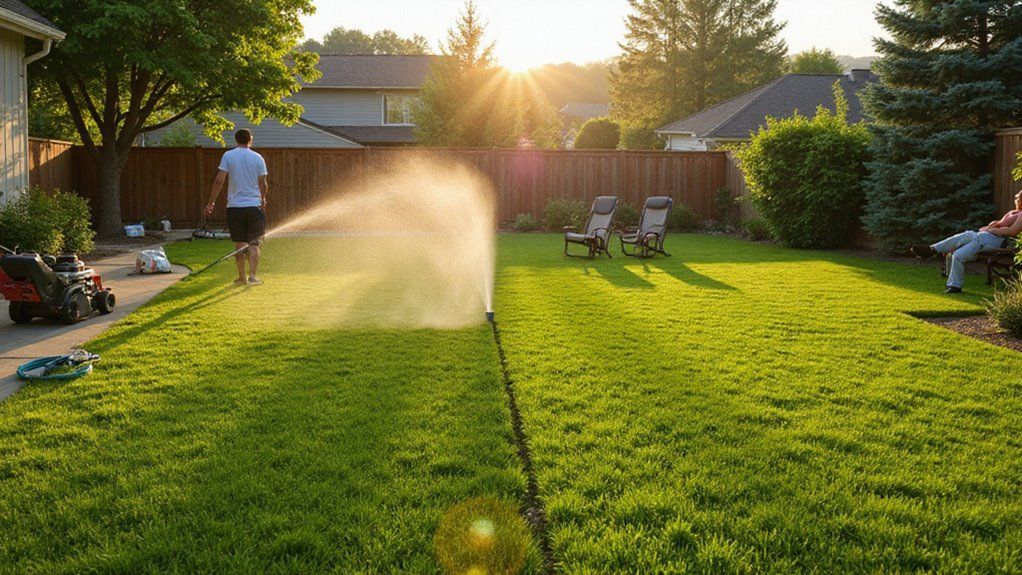
You’ll realize substantial savings with artificial grass once you account for ongoing maintenance costs versus the upfront installation expense. Water bill reductions, eliminated lawn care services, and zero spending on fertilizers or pesticides shift the total cost of ownership significantly in your favor.
Most Florida homeowners reach their return on investment breakeven point within 4–7 years, depending on yard size and local water rates.
Long-Term Maintenance Cost Comparison
Artificial grass costs more initially but saves money over time compared to natural lawns. Installation costs range from $12 to $20 per square foot in Florida. The savings come from eliminated water bills and maintenance expenses.
Natural lawns need constant care, equipment, and chemical treatments. Artificial grass requires only occasional rinsing and brushing. This minimal maintenance translates to significant time savings each week.
Florida homeowners recover their investment within 4 to 7 years. These savings become especially valuable in areas with water restrictions or drought conditions.
Water Bill Reductions
Artificial grass eliminates monthly water costs completely. A 500-square-foot natural lawn costs $45-$65 monthly in water bills, while artificial turf needs no water. The savings add up quickly over time.
Larger lawns show even more dramatic savings potential, with 2,000-square-foot natural lawns costing $165-$235 monthly for watering. These water bill reductions make artificial grass an economical choice in the long run.
Furthermore, annual savings range from $540 for small lawns to $2,820 for larger properties. The elimination of water costs helps offset the initial installation investment.
Eliminated Lawn Care Expenses
Artificial grass eliminates multiple lawn care expenses in Florida. Monthly natural lawn maintenance costs range from $150 to $300. These costs include professional services like mowing, fertilization, and pest control. Basic maintenance fees break down to $80-$150 for mowing, $30-$80 for fertilizer, and $25-$50 for pest treatments.
A switch to artificial turf removes the need for regular upkeep services. Homeowners save on equipment, chemicals, and labor costs. As a result, the initial investment of $12-$20 per square foot pays off within 4-7 years through eliminated maintenance expenses.
Return on Investment Timeline
Artificial grass typically pays for itself within 4-7 years through monthly savings.
Initial installation costs range from $12-$20 per square foot for Florida homeowners. Monthly savings average $100-$200 from reduced water and maintenance costs. The payback period shortens with larger lawn areas due to greater water conservation.
Financial benefits extend beyond direct savings. Property values often increase with artificial turf installation. Smart financing options help spread out upfront costs while savings begin immediately. A personal ROI calculation should include current water bills, maintenance expenses, and local drought conditions.
What Types of Artificial Grass Are Available?
You’ll find artificial grass products segmented into five primary categories, each engineered for specific applications and price points.
Material composition—polyethylene, polypropylene, or nylon—directly impacts durability, heat retention, and per-square-foot cost, with nylon commanding premium pricing at $15–$20 per square foot versus polyethylene’s $12–$16 range.
Florida’s climate demands UV-stabilized fibers and efficient drainage backing, factors that separate budget-grade products from climate-optimized installations.
Residential Turf Options
The best residential turf options are synthetic grass fibers made from polyethylene, polypropylene, or nylon.
Polyethylene turf costs $5-8 per square foot and offers a soft, natural look ideal for family yards. Polypropylene provides an affordable choice at $3-5 per square foot but shows wear faster. Nylon stands as the most durable option at $8-12 per square foot, perfect for high-traffic areas.
For optimal performance, residential turf should maintain a blade height of 1.5-2 inches. Quality installations require proper infill materials. Silica sand, rubber granules, or antimicrobial infill protect the turf base and extend its lifespan.
Pet-Friendly Varieties
Select artificial grass with high drainage rates and antimicrobial protection for pets.
The ideal pet turf needs drainage systems that process 30+ inches of liquid per hour.
Antimicrobial infill prevents bacteria growth and eliminates odors. Dense blade construction between 60-90 ounces per square yard helps prevent damage from digging.
Additionally, proper installation ensures long-term durability for your pets. Professional installation costs range from $8-15 per square foot. Florida homeowners can reduce expenses by coordinating installations with neighbors.
Sports and Play Area Turf
Artificial turf installation costs vary based on the specific sports application and requirements.
Multi-sport fields require $8-12 per square foot for professional-grade synthetic grass. A backyard putting green costs $15-25 per square foot, including contoured surfaces for realistic play. These specialized surfaces need proper drainage and base preparation.
Meanwhile, tennis courts are more economical at $6-10 per square foot. Playground zones cost $12-18 per square foot with safety-certified infill material. The higher cost ensures child safety and durability under heavy use.
As a result, proper surface selection impacts both initial investment and long-term performance.
Premium vs. Budget Materials
Premium materials offer superior durability and performance at higher costs, while budget options provide basic functionality for less money.
Nylon artificial grass costs $15 to $20 per square foot and works best in high-traffic areas. Premium nylon fibers resist wear and UV damage effectively. This material maintains its shape under heavy use.
Mid-range polyethylene turf ranges from $12 to $15 per square foot. Most residential yards benefit from this balanced choice.
Meanwhile, budget-friendly polypropylene costs $8 to $12 per square foot. This option suits light-use areas like decorative spaces.
Long-term investment in premium materials reduces replacement frequency and maintenance costs. Quality materials serve families better through extended lifespan and reliable performance.
Florida Climate-Specific Options
Florida’s climate demands specific artificial turf features to handle heat, humidity, and heavy rains.
UV-stabilized nylon blends cost $18-$22 per square foot but prevent sun damage and fading. Storm-resistant anchoring runs $0.75-$1.25 per square foot to protect against high winds. Permeable drainage systems add $2-$3 per square foot for optimal water management.
In addition to these essentials, pet owners should consider antimicrobial protection. Antimicrobial infill costs $1.50-$2.50 per square foot and prevents odors from pet use. Recycled polyethylene backing provides durability at $13-$16 per square foot.
How to Install Artificial Grass?
Installing artificial grass requires a methodical five-step process: measuring your site, removing the existing lawn, establishing a proper base with drainage, laying and securing the turf, and applying infill materials.
Each phase directly impacts your project’s total cost, which ranges from $12–$20 per square foot in Florida when accounting for labor (50–60%) and materials (40–50%).
You’ll need to understand these technical steps to estimate your budget accurately and ensure compliance with local permit requirements for landscaping projects exceeding 500 square feet.
Site Measurement and Assessment
Site measurement and assessment requires calculating exact dimensions and evaluating ground conditions before installation. A thorough measurement includes total square footage plus 5-10% extra for waste. Professional installation costs typically range from $12-20 per square foot in Florida.
Critical steps involve checking drainage patterns and marking underground utilities. Experts must document slopes, irrigation lines, and any obstacles requiring custom cuts. The proper assessment prevents unexpected costs and installation problems.
Proper measurements lead to accurate estimates and successful installations. A complete evaluation helps clients understand total project costs upfront. Moreover, detailed site planning ensures smooth project completion without surprises.
Removing Existing Lawn
Removing old lawn requires careful preparation before installing artificial turf. A contractor must cut and strip away 3-4 inches of existing grass and soil. Most projects need specialized equipment like sod cutters ($80-120 daily rental) or skid steers for larger areas.
The removal process adds $1-3 per square foot to total installation costs. Professional crews will handle debris removal and proper grading. To ensure success, contractors must follow local drainage requirements and building codes.
Creating Proper Base and Drainage
A proper base and drainage system requires specific materials and professional expertise.
The essential base materials include geotextile weed barrier fabric that costs $0.50-1 per square foot. Perforated drainage pipes must be installed in low areas to prevent water pooling. Sturdy edge restraints like plastic bender board or concrete keep the turf secure.
Professional consultation helps ensure correct installation and longevity. Most experts charge between $150-300 for initial site assessment. Equipment rental for proper soil compaction completes the preparation process.
Furthermore, these foundational elements protect your investment and maintain turf quality for years to come.
Turf Installation Process
The complete turf installation process takes 4-9 hours with costs ranging between $1,800-$3,400.
Each turf installation begins with positioning, requiring 2-4 hours and costing $1,000-$1,600. This critical first step ensures proper alignment and foundation.
Professional seam joining follows, taking 1-3 hours at $500-$1,200. Proper seams prevent gaps and lifting.
As a final step, edge securing needs 1-2 hours and costs $300-$600. This step protects the perimeter and prevents fraying. However, weather conditions or surface preparation may affect completion times.
Infill Application and Finishing
Infill installation requires specific materials and tools for proper synthetic lawn completion. Silica sand costs between $0.50 to $1.50 per pound, while rubber granules range from $1 to $2 per pound. Professional equipment helps achieve optimal results.
Power brush rentals typically cost $50 to $150 per day. Most installations need antimicrobial protection for longevity. Additional treatments average $100 to $200 per application.
Final grooming and compaction services ensure proper infill distribution and grass blade support. Professional installers use specialized techniques to prevent clumping and maintain consistent surface texture.
Are Financing Options Available for Turf Installation?
Yes, financing options exist for artificial turf installation. Several payment methods help make the investment more affordable.
Installation costs range from $2,400 for a 200-square-foot yard to $40,000 for 2,000-square-foot spaces. The most common financing options include contractor payment plans, home equity loans, and personal loans.
Furthermore, installer payment plans offer 6-24 month terms with 0-10% APR for small projects. Home equity loans extend 5-15 years for large installations, while personal loans provide 2-7 year terms for medium-sized yards.
A smart approach involves comparing rates from multiple lenders to secure the best terms for your budget.
Do Florida Homeowners Need Permits for Artificial Grass?
Yes, Florida homeowners generally need permits for artificial grass installation. The exact requirements depend on your city and property location.
Most municipalities require permits for installations larger than 500 square feet. Permit fees typically range from $50 to $300 based on project size. Local authorities review drainage plans and setback requirements before approval.
Furthermore, homeowners must check with their HOA for additional restrictions. Many associations have specific rules about artificial turf materials and installation methods. To move forward, contact your city’s zoning office for detailed requirements.
Ready for a Lush, Low-Maintenance Lawn in Florida?
A low-maintenance artificial lawn costs between $6 to $22 per square foot in Florida, depending on installation method. DIY installation for 200 square feet ranges from $1,200 to $2,000 for materials only. Professional installation of high-traffic turf costs $2,800 to $4,400 for the same area.
Artificial grass requires minimal upkeep compared to natural lawns. A simple rinse and occasional brushing keep the surface clean and upright. Moreover, synthetic turf eliminates the need for mowing, watering, or fertilizing.
Florida homeowners can save water and maintenance costs with artificial grass. The initial investment pays off through reduced utility bills and lawn care expenses. Additionally, artificial turf stays green year-round without seasonal changes or drought concerns.
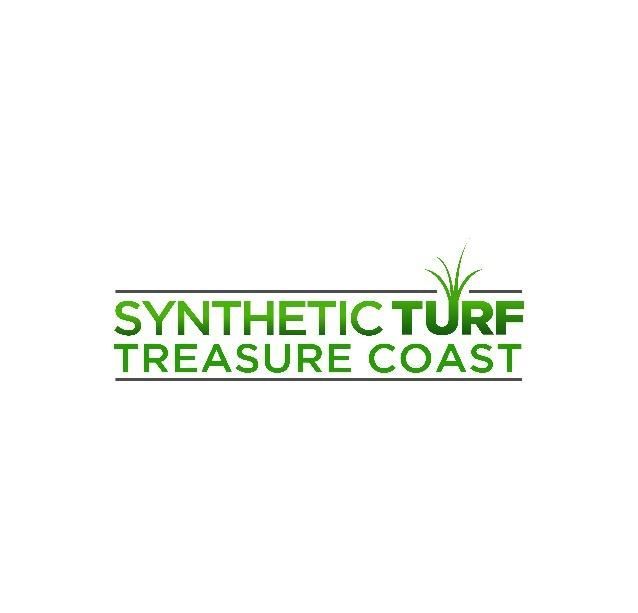
About the author
Kathy Leavell
Kathy Leavell is the founder and owner of Synthetic Turf Treasure Coast, a leading provider of synthetic grass solutions for residential and commercial properties in Florida. With over a decade of experience in the industry, Kathy has become a recognized expert in synthetic turf installation, maintenance, and repair. Under her leadership, Synthetic Turf Treasure Coast has earned a reputation for exceptional customer service and high-quality workmanship.
Prior to starting her own business, Kathy worked in sales and marketing roles at several major synthetic turf manufacturers.
